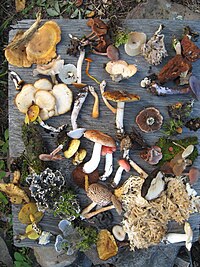
Photo from wikipedia
Considering the great importance of Ramsar Site for biodiversity, we measured the invasibility - the habitat characteristic that refers to the susceptibility to invasions, in six Ramsar Sites of the… Click to show full abstract
Considering the great importance of Ramsar Site for biodiversity, we measured the invasibility - the habitat characteristic that refers to the susceptibility to invasions, in six Ramsar Sites of the southern part of the Pannonian Plain. We selected 18 invasive neophytes of different life forms, due to their different habitat preferences, to cover as many habitat types as possible. We made 669 plots during the period 2011-2015, in which at least one target invasive taxa was present. We determined habitat types in each plot, using the EUNIS habitat classification. The invasibility of different habitats in Ramsar Sites was determined taking into account the coverage index (D%) of all selected invasive species. Our analyses showed that habitat invasibility was highest in different forest, and in riverine shrub habitats, while the smallest invasibility was registered in sedge and reed beds, without free-standing water. Previous research based on some other methods coincides with our results and supports the suitability of using the coverage index method when estimating the habitat’s invasibility. As wetlands are one of the most endangered ecosystems in the world, determination of habitat invasibility has great importance for management and should be one of the main preventive steps in their protection.
Journal Title: Wetlands
Year Published: 2019
Link to full text (if available)
Share on Social Media: Sign Up to like & get
recommendations!